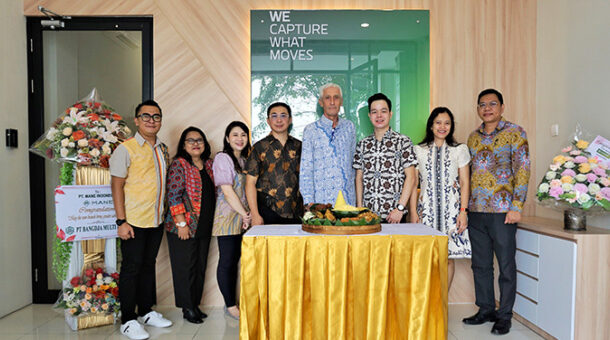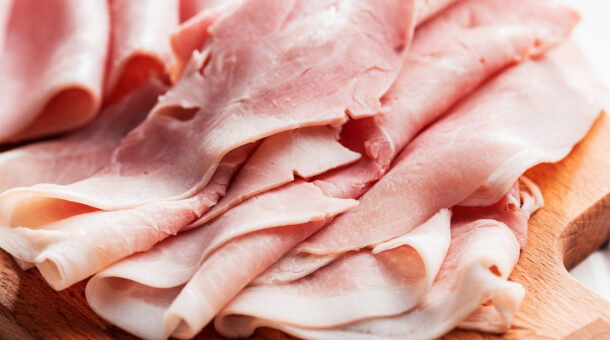As an integral participant in the production of food and drinks, MANE remains conscious of its role in supporting the well-being of consumers.
According to the World Health Organization, people are now consuming excessive amounts of foods that are high in calories, fats, sugars and sodium. Conversely, consumers and manufacturers are becoming increasingly aware of the impact of diet on preventing the development of chronic diseases. In order to motivate the public to eat in a more well-balanced manner, it is critical that these healthier foods are also desirable in terms of taste. This is the challenge MANE faces: developing flavours that fulfill consumer desires while supporting food and drink manufacturers in reformulating their products to promote healthier diet alternatives.
Health
and wellness
Creating flavours beloved by consumers, while supporting food and beverage manufacturers in creating healthier alternatives.
SUGAR
Numerous countries around the world face an excess in sugar consumption. In an effort to curtail this dilemma, the food and drink industry is actively reformulating its products and developing new ones, in order to offer options that contain less sugar...
Numerous countries around the world face an excess in sugar consumption. In an effort to curtail this dilemma, the food and drink industry is actively reformulating its products and developing new ones, in order to offer options that contain less sugar.
Fundamental research
The relationship between our ability to sense sweetness, which is linked to our taste buds, and flavours, linked to olfaction, is quite complex.
MANE has dedicated an international research programme to understand flavour modulation for sweet. Thanks to over 15 years of scientific research on the taste-enhancing characteristics of various traditional flavouring ingredients, MANE has successfully developed innovative solutions with unique taste-modifying properties.
Our multimodal sweet taste modulation allows to play with three parameters:
- Intensity: reach the desired sweetness level
- Timing: match the taste release and temporal profile of sugar
- Quality: improve the sugar-like sweetness profile and the mouthcoating of sugar
Flavour solutions
SENSE CAPTURE™ MS is a complete range of flavour solutions for sugar-reduced products. It is a natural solution that responds to the evolving market demand, providing an appealing taste to low-sugar beverage, dairy, bakery and confectionery products.
Sensory methods
In adhering to MANE’s strict quality controls and internal policy, each flavour solution for sugar-reduced products is validated through a sensory evaluation. This aforementioned policy defines the rules and context of use of MANE’s sweet modulation solutions, in alignment with IOFI and FEMA guidelines.
Additionally, in order to address the various challenges in developing sugar-reduced products, MANE’s Sensory Team has developed a long-term research programme focused on sugar mouthfeel perception in beverages. Through this initiative, a multiple-sip methodology has been perfected, enabling our teams to evaluate different attributes that contribute to the perception of sweetness, both instantly and over prolonged periods of time.
Natural sweeteners
An alternative approach to sugar reduction in the food and drink industry is through the use of intense, natural sweeteners, such as stevia. As for any intense sweetener, the sweet perception of stevia is different from the sweet perception of sugar. As such, MANE has created SENSE CAPTURE ™ STEVIA, which enables us to fine-tune the taste of stevia-infused elements and mask the undesired off-notes and sensations often associated with stevia extracts: bitterness, liquorice, astringency and a lingering effect.
MANE is directly involved in the Stevia extraction business via its joint-venture S.I.E. (Stevia Internacional Europe) and its partnership with the French company Stevia Natura, considered the pioneer in Stevia extraction.
MANE expert voice: it is our experts that speak best about it! Rediscover their articles on sugar reduction and on sweetness modulation published in LinkedIn.
SALT
Essential for life, table salt’s sodium component (NaCI) is unhealthy when consumed in elevated amounts. Although the World Health Organisation recommends less than 5 grams of salt per day, adult consumers average 9 to 12 grams...
Essential for life, table salt’s sodium component (NaCI) is unhealthy when consumed in elevated amounts. Although the World Health Organisation recommends less than 5 grams of salt per day, adult consumers average 9 to 12 grams. With convenience being a motivating factor in today’s society, this is greatly impacted by processed and restaurant food, as they deliver more than ¾ of consumers’ sodium intake. Health concerns are well-warranted, as a high salt diet raises blood pressure and causes hypertension, the major cause of cardiovascular disease. Many countries are now focusing on salt reduction, currently making this a major challenge of the Food and Beverages industry.
Salt achieves many functions, such as furnishing a salty taste, enhancing food’s natural flavours, and masking bitterness. By reproducing these elements, without compromising taste, SENSE CAPTURE™ SALT is the ideal natural and clean label solution , in the quest for sodium reduction. SENSE CAPTURE™ SALT’s composition is a result of MANE’S in-house cutting-edge technologies, providing it with proven sensory performance and guaranteed saltiness.
This flavour enhancing low-sodium solution is designed for use in a wide range of food products: soups, sauces, stocks, ready meals, processed meat and cheese, savoury snacks, and bread and pastry products. SENSE CAPTURE™ SALT is one of, if not the most, complete and cost-effective flavour solution on the market.
MOUTHFEEL
Mouthfeel is the physical sensation created in the mouth, including along the roof and tongue, stimulated while eating or drinking. This experience is linked to the product’s rheological properties, and relates to the sensation of friction and lubrication in the mouth...
Mouthfeel is the physical sensation created in the mouth, including along the roof and tongue, stimulated while eating or drinking. This experience is linked to the product’s rheological properties, and relates to the sensation of friction and lubrication in the mouth. It is a critical element in fully experiencing a food or beverage.
Due to consistently evolving health and wellness trends, there is a constant need to replace ingredients with newer, healthier alternatives. These changes in fat, sugar and monosodium glutamate contents within food and drinks, have had a significant impact on the products’ mouthfeel, disrupting consumers’ taste sensations.
Fundamental research
MANE conducts a comprehensive mouthfeel research programme, which strives to create the sense of maximum mouthfeel, in spite of fat and sugar reduction, as well as MSG replacement. The sensory integration that occurs while consuming foods and drinks enables flavours to play a significant role in mouthfeel perception. MANE’s advanced research in biotechnology has led to the discovery of key components that impact consumers’ mouthfeel perceptions.
Flavour solutions
MANE has developed a complete range of SENSE CAPTURE™ solutions, which effectively improve mouthfeel perception. By significantly increasing the coating and fatty sensation of low fat dairy products, as well as by bringing roundness to culinary applications, consumers can take greater pleasure in consuming their food and beverages.
Sensory evaluation expertise on mouthfeel
MANE’s internal sensory panellists are trained in a wide range of sensory attributes and references, in order to illustrate the complexity of mouthfeel perception in various applications. Additionally, MANE’s sensory team has perfected a multiple-sip methodology. This enables the team to evaluate various attributes linked to mouthfeel perception, both instantly and after prolonged periods of time.
PROTEIN TRANSITION & MASKING
As a result of demographic growth, there is an increasing demand for protein. According to the United Nations Organization, by 2050, there will be 9.7 billion people around the world, all of whom need to be fed...
As a result of demographic growth, there is an increasing demand for protein. According to the United Nations Organization, by 2050, there will be 9.7 billion people around the world, all of whom need to be fed, and this will represent approximately 70 percent more food to meet global demand. It will be impossible for such a population to consume the amount and type of proteins that are typical of current diets in North America and Europe.
Developed countries have initiated a shift in protein consumption, mainly due to sustainable, ethical and health considerations. There is a prominent transition taking place from consuming animal to vegetal proteins. On the other side, alternative protein sources are needed, especially in emerging countries where access to proteins will become more and more difficult.
That is why the plant–based food category is no longer a niche industry, and the use of plant proteins ingredients is now common in both sweet and savoury foods. For instance, soy, wheat, pea, lentils, rice, nuts, algae, among other are now key ingredients of meat-free and dairy-free alternatives but also for hybrids products mixing the two types of protein sources. However, formulating food and beverage products containing plant proteins is still associated to a flavour challenge to overcome undesirable sensory perception, such as the need to suppress off–notes while increasing desirable flavour notes. It is well known that plant proteins may provide beany, cereal, and hay notes as well as bitterness and astringency depending on their composition, source, and production process.
MANE's key assets
With over 50 years in the protein segment, MANE has a longstanding expertise in plant proteins ingredients, and it has notably been using these ingredients in their functional and nutritional formulations, as well as understanding the complexity of mixing them with other food ingredients.
Currently, Protein Transition is one of our flavour division’s key research platforms. MANE scientists and food technologists study a large diversity of plant protein ingredients willing to understand the complex interactions between these ingredients and flavour molecules. Depending on the food matrix, these interactions can be of sensory and/or of chemical nature and they may affect the final organoleptic properties by altering the flavour perception or leading flavour degradation. MANE scientist and flavourists can control these interactions and develop dedicated solutions to maximise the taste experience while consuming plant-based food and beverages.
Masking technologies
MANE has developed unique masking technologies for both sweet and savoury applications. SENSE CAPTURE™ MASK range are flavour solutions focused on masking unpleasant notes. It particularly targets the sensory challenges associated with alternative emerging products such as plant-based and high protein food and beverages. Understanding the intrinsic characteristic of ingredients, particularly plant proteins like soy, pulses, nuts, and micro-algae, has allowed MANE scientist to decompose ingredient off-notes description in more simple descriptors such as: beany, hay, cardboard, rancid, bitterness- and astringency. For that purpose, MANE’s sensory experts also developed specific off-note references and they are training expert panels in order to illustrate the complexity of the sensory perception in various applications containing plant protein sources.






